I am new to using the networkd3 package and I am trying to understand how to adjust the layout manually. As an example I have the following layout
library(networkD3)
library(tidyverse)
library(data.tree)
library(htmlwidgets)
set.seed(1)
example = data.frame(lvl1 = rep("A", 5), lvl2 = sample(c("D" ,"B", "C"), 5, replace = T), value = sample(c(1,2,3), 5, replace = T))
> example
lvl1 lvl2 value
1 A D 3
2 A C 3
3 A D 2
4 A B 2
5 A D 3
Data_tree <- example %>%
unite(col="pathString",lvl1,lvl2,sep="-",remove=FALSE, na.rm = T) %>%
as.Node(pathDelimiter = "-")
diagonalNetwork(ToListExplicit(Data_tree, unname = TRUE ),
fontSize = 9,
linkColour = "#ccc",
nodeColour = "#fff",
nodeStroke = "orange",
textColour = "#000000")
What I would like to do is to somehow map the value column into the size of the node. Similarly to how aesthetic mappings work in ggplot2. So ideally for each level I would like the nodesize to be proportional to the total value for this breakdown.
So for example lvl1 has only one possible value A so the node should get 100% of the chosen nodesize. On the other hand, lvl2 has 3 values, so for D I would like it to have (3+2+3)/13 % of the full node size, C should have 3/13 % of the nodesize and B should have 2/13 % of the nodesize.
This is just an example and I can do any manipulation needed, but is this even possible for these types of charts?
